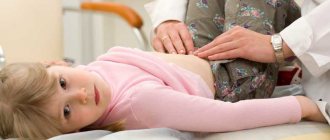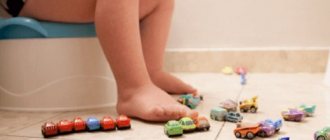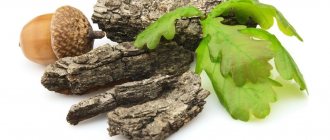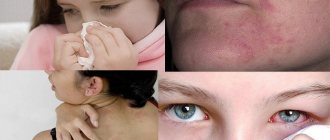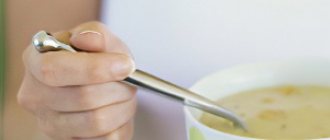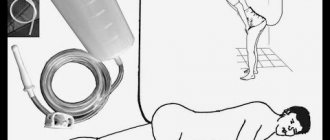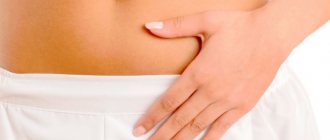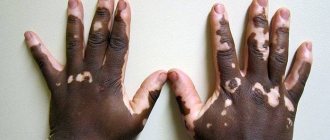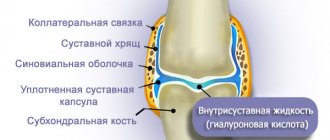Diarrhea in childhood can be caused by various factors: from a reaction to the eruption of baby teeth to an acute intestinal infection. Regardless of the cause of the disease, diarrhea always disrupts the functioning of the gastrointestinal tract.
A specialist must determine the cause of diarrhea and prescribe treatment. Parents need to be able to distinguish dangerous conditions that threaten the child’s health and provide symptomatic first aid. Not everyone knows what to give a child for diarrhea so as not to harm it, so it is worth understanding the causes of the disease and methods of treatment.
Why does a child vomit?
Most often, young children experience seizures. This is due to the not yet fully formed muscular system of the pharynx and the swallowing of a large amount of air. Vomiting may be accompanied by nausea, or may begin spontaneously without visible symptoms .
There are several types of vomiting in children:
- Regurgitation in infants. It may appear 30-60 minutes after feeding. The baby regurgitates excess air with some of the food.
- Abundant manifestations up to 100 ml - it occurs most often in children.
- Spastic - in the form of a fountain or stream.
- Atonic - this type occurs when the function of the esophagus is impaired; gastric masses flow out in a thin stream very slowly.
Classification of attacks
Regurgitation is a classic example of vomiting in infants, in this case it is a physiological process.
Attacks are classified according to the symptoms accompanying them:
- Reflex – they are observed with severe pain in the abdomen, and can occur during coughing attacks.
- Brain - occur on an empty stomach . This type is accompanied by drowsiness and headache. In older children it can manifest itself with meningitis and scarlet fever.
- Acetonemic - this type is rare. Children are tormented by an uncontrollable attack with the smell of acetone on their breath. Vomiting can occur up to 30 times a day. Due to the constant urge, the baby cannot eat. It becomes exhausted, and convulsions and fainting may occur.
- Nervous or psychogenic - this type is found in hyperactive children. They can occur during conflict situations, as a consequence of anxiety, and in mental disorders.
Since the symptom is characteristic of many diseases, it is important to correctly understand the cause in order to understand what should be given to the child when vomiting.
There are many reasons for vomiting. In infants, the main cause is most often unformed digestion. At an older age, this may result from:
- Poisoning – eating poor quality foods, drug poisoning, overeating.
- This often becomes a symptom of problems with the gastrointestinal tract. The manifestation accompanies diseases such as dysbiosis, gastritis, dysentery.
- Craniocerebral diseases – migraines, concussions, skull injuries.
Often the causes can be high temperature, allergic reactions, renal failure, metabolic disorders, acute appendicitis. This list should also include an intestinal infection, the symptoms of which are described here.
Parasites in babies
April 27, 2020, 14:05 Expert of the article: Blinova Daria Dmitrievna 0 5,753
If parents notice worms in a baby, they need to take action immediately, since at first glance a simple problem develops into a serious disease, which, if not treated in a timely manner, causes serious damage to the health of the baby. It is important to promptly identify the presence of worms in an infant, consult a specialist and begin adequate treatment. What are the symptoms of helminths in newborns, how to treat the baby without harm to health, and what preventive measures will help avoid relapse?
When emergency help is required
Parents should definitely call an ambulance if their baby exhibits the following symptoms:
- Heat.
- Severe abdominal pain and loose stools (more details in this article). Without consulting a doctor, you cannot think about what to give your child for vomiting and diarrhea, as dehydration may occur, and this is dangerous for the child’s body.
- Fainting, lethargy, pale skin.
- Continuous vomiting.
Vomiting attacks in children, especially those under one year of age, should be taken seriously . In young children, dehydration quickly sets in, and this is the most dangerous complication.
Be sure to give Regidron for children when vomiting according to the instructions. Smecta helps very well with attacks. This is a natural sorbent that forms a film in the stomach. It prevents toxins from being absorbed.
If your baby starts vomiting, you need to wash him well and calm him down. Do not give drink in large quantities. You can only give water in small sips. Vomiting may be the first signs of infectious diseases , so you should definitely consult a doctor.
Parents should be able to provide first aid until the doctor arrives. In most cases, correct actions help avoid complications.
First of all, parents need to:
- Place your baby in bed and turn his head to the side.
- The baby must be held horizontally in your arms.
- You can't give food.
- If the temperature rises above 38, you can give Paracetamol. For infants, use antipyretic suppositories.
- During an attack of vomiting, it is necessary to sit the baby on a chair and tilt it slightly forward so that the vomit cannot enter the lungs.
- After each attack, you need to rinse your mouth with clean water.
- It is better to act calmly, without creating panic and without scaring the children even more.
- Parents are concerned about the question of what to give their child when he is vomiting without fever, and whether he can give him something to drink. Doctors recommend Regidron for children who are vomiting. This is a saline solution that is diluted strictly according to the recipe. You need to take two teaspoons every 10 minutes.
- Smecta for vomiting in children without diarrhea will help stop the attack.
If the vomiting is one-time without fever or diarrhea, then you don’t have to call an ambulance, but carefully monitor the condition of the baby.
Preventive actions
When helminthiasis in a child has been successfully cured, care must be taken to comply with preventive measures, recommendations for which can be given by an infectious disease doctor. But the most important thing is maintaining the baby’s personal hygiene, treating all family members against helminthiasis and ensuring that the child does not put contaminated toys and objects in his mouth. Mom also needs to monitor the cleanliness of the room where the baby lives. It is important to regularly do wet cleaning, wipe off dust, and store children's dishes in places inaccessible to insects and bacteria. Before conception, you need to fully examine your body, identify the disease and treat it before pregnancy occurs. In this case, it will be possible to avoid dangerous consequences that may affect the health of the expectant mother and child. By following all these simple rules, you will be able to protect your baby from helminthic infestations and maintain good health.
Drug therapy
Depending on what pathology doctors diagnose, he may be sent for examination. To eliminate urges in children, doctors most often prescribe medications in two directions.
The baby is prescribed temporary medications to relieve unpleasant symptoms and remedies to eliminate the underlying disease. The following medications are prescribed to children for treatment:
The use of medications in combination with diet gives the best results
- Glucose-salt solutions.
- Cerucal is a drug that blocks the urge to vomit; it can be given to a child who is 2 years old when vomiting.
- Smecta for vomiting in a child can be used from birth. It stops intoxication of the body.
- Sorbents help fight intoxication: activated carbon, Polysorb, Enterosgel.
- After prolonged diarrhea and nausea, it is necessary to restore the functioning of the gastrointestinal tract, as the microflora in the body suffers. Linex, Bifiform, Lactobacterin are used for this.
- If the attack was accompanied by severe diarrhea, when asked what to give a child in case of poisoning and vomiting, you can recommend Diarol, Imodium.
- If intestinal infections are detected, children are prescribed Furazolidone, Nergam, Meronem.
- The drug No-shpa and Cerucal can be prescribed in the form of injections.
- If none of the drugs are effective, antipsychotics may be prescribed .
For children under one year of age, preparations in the form of suppositories or suspensions are recommended.
More details about antiemetic drugs for children, including in the form of injections and drugs during chemotherapy, are described here.
Main causes of vomiting
Initially, you need to figure out why children vomit. After all, this may also vary the first aid that the baby should receive. Main reasons:
- Intestinal infections.
- Poisoning not only with food, but with poisons, chemicals, and medications.
- This condition can also be caused by various pathologies of the digestive system.
- A child may vomit due to nervous disorders or mental shock.
- Vomiting often occurs with allergies.
- This condition may appear when the climate changes.
There are also other reasons for this problem. However, this is rather an exception to the rule than the norm.
Traditional methods of treatment
Treatment with folk remedies is always very popular. But parents should be careful when they choose what to give their child after vomiting from folk remedies. They must not be abused.
Parents themselves should decide which remedy to choose for vomiting: folk or medicinal, but Smecta and Regidron must be in the first aid kit
The best remedies for children are: 1 Dill seeds - pour a teaspoon of seeds into a 200 ml glass of hot water and boil over medium heat for about 5 minutes. Give this decoction once every 2 hours, 20-50 ml. 2 Melissa tincture - take 200 grams of lemon balm and pour one liter of boiling water over it. After it has been left for 5 hours, strain it. Drink this tincture often, but in small quantities. 3 Ginger decoction . To prepare it, you need to grate the ginger on a fine grater, you should get 2 tablespoons. The resulting ginger is poured into a glass of water and simmered over low heat for at least 15 minutes. 4 Mint infusion - in order to get this infusion, you need to leave 20 grams of mint under a closed lid for half an hour, which must be poured with one glass of boiling water. Drink 20 ml of infusion every three hours. 5 Milk-yolk mixture - to prepare the mixture, take warm milk, yolk and beat them. You should take this mixture often, 2 tablespoons at a time. We tell you in this publication when you can introduce yolk into your baby’s complementary foods.
Any medications must be taken with caution, observing the dosage and best agreed with your doctor to avoid complications.
What to give a child when vomiting: medicines and folk recipes
The harbinger of this process in most cases is nausea, which causes babies a lot of discomfort.
How to help kids
Before giving any medication to children who are vomiting, mothers should determine the cause of this condition. If the children’s condition does not worsen, then they should act as follows:
- First of all, they need to prevent dehydration, so children should be given as much fluid as possible. Infants should be given water from a pipette or a spoon. Older children can be fed from a bottle or cup. In such situations, pediatricians recommend using not water, but special solutions that can be purchased at any pharmacy chain, for example, Regidron.
- After vomiting stops, mothers should help babies rinse their mouths to remove any remaining stomach acids and bad taste. You should also wash your babies to prevent irritation.
- Babies should not be fed for some time, so as not to provoke a resumption of the gag reflex.
- Children need to be put into beds, creating the most comfortable conditions for them. It is better to lay babies on their sides so that if vomiting resumes, they will not be able to choke on the escaping masses.
- In the case when the mother finds blood in the vomit, she should force the baby to swallow a piece of ice, and then put a cold heating pad on his tummy. This will help stop internal bleeding and keep the child in a stable condition until the ambulance arrives. In such situations, it is strictly contraindicated to give children water or give them any medications.
What to give your child when vomiting
If the baby repeats the reflex more than three times in 60 minutes, then the mother can give him the appropriate medicine for vomiting. If blood is detected in the vomit, you should immediately call an ambulance, as the baby may be bleeding and needs emergency help.
The following remedies can be given to a child with severe nausea and vomiting:
- Children should be soldered with special solutions that contain a large amount of nutrients and minerals. They can be purchased at pharmacy chains in the form of a powder, which you need to dilute yourself, in accordance with the instructions.
- If parents do not have special solutions on hand, they can give their children mineral water from which gases have previously been released, for example, Borjomi, Essentuki, etc.
- You can give your children sweet tea.
- To remove toxic substances, it is necessary to give children adsorbents. For such a group of patients, it is recommended to use Activated Carbon tablets, Atoxil, Enterosgel, Smecta.
- If a child is constipated, you can give him a glycerin suppository, which will provoke the natural process of defecation.
- After the cessation of the gag reflex, it is necessary to normalize the functioning of the gastrointestinal tract, for which pediatricians recommend using the tablets “Pancreatin”, “Motorix”, “Mezima”.
- A one-year-old child should be given medications only those prescribed by the pediatrician.
In the case when the cause of vomiting is that the child’s body is affected by an intestinal infection, and is accompanied by diarrhea, then pediatricians prescribe Enterofuril for the children.
When giving this medicine, parents should take into account that it only affects the causative agent of the infection, but does not replenish the fluid lost during vomiting. That is why pediatricians prescribe special solutions in parallel with this medication.
For severe nausea and gag reflex, children can be given Motilak. This drug has prokinetic and antiemetic effects.
If these processes are accompanied by pain in the abdominal area, then mothers can give their children “Phosfalgel”, which belongs to the category of antacids.
After penetrating into the child’s body, the active components of the medication begin to envelop the mucous membranes, neutralize acids, and adsorb.
Enterosorbents
| "Enterosgel" | This medicine has a gel-like consistency, which greatly simplifies the process of its use. Infants with diarrhea should be given half a teaspoon per day. Pediatricians recommend dividing this dose into several doses. Children whose age ranges from 1 to 5 years should be given the medication three times a day, 0.5 tsp. For adolescents, the single dose can be increased to 1 tbsp. l. |
| "Smecta" | This medicine is sold in pharmacy chains in powder form. Before taking, you need to dissolve 1 sachet in a small amount of water or compote (50 ml). Children under one year old should be given no more than two sachets per day; for older children, the daily dose can be increased to 4 sachets. |
| "Phosfalgel" | This medication can even be given to infants, since it is absolutely safe and, in addition to its adsorbing effect, is capable of enveloping the mucous membranes of the gastrointestinal tract. The daily dosage for babies whose age does not exceed 6 months is 4 g. Older children can be given 8g of the drug per day |
| "Polysorb" | This medicine is available in powder form and is indicated for diarrhea that has an allergic and infectious etiology. The dosage is determined by the patient's weight. A baby whose weight does not exceed 10 kg can be given no more than 1.5 tsp. powder, previously dissolved in water (50 ml). This dosage should be divided into three times. Children whose weight varies in the range of 11-30 kg can be given 1 tsp. diluted powder three times a day. If the child’s weight exceeds 30 kg, then the single dosage can be increased to 2 tsp. |
Probiotics
| "Bifiform" | It is prescribed for children to restore digestive processes, as well as to support immunity. In pharmacy chains, this product is sold in tablet and powder form. Infants should be given powder, and children from three years of age can be given medicine in tablet form |
| "Hilak Forte" | The drug is recommended to be given to children from the age of two. The daily dosage is no more than 30 drops. For older children, you can increase the dose to 50 drops |
| "Bifidumbacterin" | In pharmacy chains, the drug is presented in capsule and powder form, as well as in the form of suppositories. The powder can be given to children no more than three times a day, one dose at a time. In capsule form, the medicine can be used by children from the age of four |
| "Linex" | This medication can be given to infants one capsule per day. For children whose age ranges from 1-12 years, the daily dosage can be increased to 3 capsules |
| "Normobakt Junior" | For diarrhea, babies from the age of six months can be given this medication in a daily dosage of 0.5 sachets. Starting from three years, the dose can be increased to 1 sachet. For children of the older age group, the daily dosage is set at 2 sachets |
Medicines for diarrhea for children:
- Loperamide tablets from 5 years.
- Phthalazol tablets from two years of age.
- Furazolidone tablets from one year of age.
- Enterofuril tablets from one month.
- Enterol tablets.
Traditional methods
If mothers want to eliminate the gag reflex of their babies using “old-fashioned” methods, then they should first consult with pediatricians.
In the case where the cause of this condition is a physiological factor, the following recipes can be applied:
- It is extremely important for children to promptly replenish lost fluid. To do this, you need to prepare a solution: pour boiled water (1 liter) into a liter jar, add baking soda and salt (0.5 tsp each) and sugar (4 tbsp). This solution will help restore the water-salt balance.
- You can prepare an infusion from mint leaves. Place crushed leaves (2 tbsp) in a deep container and pour boiling water (200 ml) over them. The mixture must be infused for 2 hours. After filtering, the liquid should be given to the child several times a day, 1 tbsp. l.
- A good effect is achieved by using green tea to which a small amount of sugar or honey has been added.
- Baked quince is used as an antiemetic in folk medicine.
- Ginger powder should be placed in a thermos and filled with boiling water. After infusion, the drink should be given to the baby three times a day, 1 tsp.
- Newborn babies can be given dill water, which not only stops gagging, but also eliminates bloating and intestinal colic.
Therapeutic diet
Much attention should be paid to nutrition, especially during the recovery period after vomiting. Parents should know what they can feed their baby after an attack and whether it can be done.
There are certain rules of nutrition during illness:
- Food should be offered five hours after the attacks stop.
- In the first hours, only liquid foods can be given.
- Meals are divided into several parts and given in small portions.
- Foods that can be offered to children after the attack has ended should be light and rich in vitamins.
- If your son or daughter refuses to eat, there is no need to force him to eat. This may cause another attack.
- It is not recommended to come up with a diet on your own . It is best for a doctor to do this, based on the severity of the attack and the patient’s condition.
- For the first few days, feed as little fat as possible. They worsen the functioning of the stomach.
- The amount of carbohydrates in dishes should be reduced. They can cause a fermentation effect.
- Breast milk should remain the most important food for up to a year. For older children, you can prepare buckwheat or rice porridge.
Allowed products after an attack include
- Broths cooked with vegetables;
- chicken breast, veal;
- crackers;
- low-fat kefir;
- sweet and strong tea.
Cannot be given after an attack
- chips, crackers, soda;
- fried, sour or salty foods;
- green vegetables, fruits;
- lean meat;
- broths with fish, beef or mushrooms.
It is important to remember that treatment should be carried out only taking into account an integrated approach . Following a diet for vomiting at the age of 4 and 5 years gives good results together with taking medications. It is also important for diabetics to know which foods increase and which foods lower blood sugar levels.
Nutrition
Whatever the cause of diarrhea, following a diet during this period is extremely important. At first, it is better for the child to fast. After diarrhea subsides, 6 hours should pass, this is optimal. Then you can give the baby:
- rice water or porridge;
- wheat cracker;
- vegetable lean soup;
- baked apple;
- oatmeal;
- mashed potatoes;
- strong black tea.
If you have diarrhea, it is strictly forbidden to eat eggs, meat, fish and dairy products. Also, you should not feed your child fatty, spicy foods, canned food, fresh vegetables and fruits. Such food can provoke a new attack of diarrhea and vomiting. You can eat as usual for 5–7 days after all symptoms disappear.
Important. A four-year-old child with diarrhea should be given the same medications as a one-year-old child. At this age, diarrhea cannot be treated with antidiarrheals (Loperamide, Imodium) or antibiotics without a doctor’s prescription.
To summarize, it should be noted once again that self-medication for diarrhea can be dangerous. To prevent a mother who has given her child the wrong medicine from clutching her head, the cause of the illness should be accurately determined. Only mild diarrhea can be treated at home; in other cases, you need to go to the hospital. Take care of yourself and your children!
Possible complications
If you leave vomiting attacks unattended, the pathology can lead to serious complications. The most dangerous of them are:
- The onset of dehydration. This phenomenon often causes deaths in children. To avoid this, it is necessary to use anti-dehydration medications, which were described above.
- Frequent urges lead to injury to the esophagus, stomach and pharynx. As a result, blood may be observed in the child’s stool.
- If food particles are vomited into the respiratory tract, pneumonia can develop.
- When gastric juice enters the oral cavity, it causes the development of caries.
How to calculate the dose of medicine
Is it possible to give medication to a child at a fever, and in what cases? At a temperature of 38.5 degrees and above, medications urgently need to be given to all children; from 38 degrees, antipyretics should be given to the child for the first three months of life. Medicines should be given at temperatures above 37.5 degrees to children who have had seizures in the past.
What can you give your child for fever? The main drugs of choice are Paracetamol and Ibuprofen. The rest are analogues with the same active ingredients. A single dose of Paracetamol (Panadol, Cefekon D) is 15 mg per kg of weight. So, for a child weighing ten kilograms, a single dosage will be 150 mg. For a child weighing 15 kg, the dose will be 225 mg. You can give a child with a fever “Paracetamol” in syrup no more than four times a day if necessary. Can be used in the form of suppositories up to twice a day. The recommended interval between doses is six hours.
At what temperature can I give my child Ibuprofen? At 38 degrees and above, if the baby tolerates the temperature extremely poorly. If there are no accompanying symptoms, and the child is quite active and does not complain about his health, then you can not give medicine until the temperature reaches 38.5 degrees Celsius. A single dose of Ibuprofen is 10 mg per kilogram of weight. That is, for an 8 kg child’s weight you need to give 80 mg. You can use the drug three times a day maximum.
How to give Nurofen to children with fever? This is an analogue of Ibuprofen. A single dose is a maximum of 10 mg per kilogram of weight. For children aged 3-6 months, the official instructions recommend giving 2.5-3 ml three times a day (but not more than 150 mg per day). You can give your child Nurofen at fever, regardless of food intake, because it is a symptomatic medicine. The medicine should be used for no more than three days as an antipyretic and no more than five days as a pain reliever. You can give Nurofen to a child with a fever no more than once every eight hours. By the way, judging by the reviews, Nurofen is the most popular medicine among parents, which helps to quickly and effectively cope with fever. Some parents comment on the convenient syringes that allow them to give the correct dose of medication.
Antipyretic medications reduce the temperature by approximately one to one and a half degrees within one to one and a half hours. You should not expect a decrease to normal (36.6 degrees). There is no need to give any more medications if the readings have dropped to elevated, but not critical.
